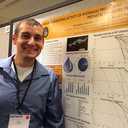Author Interviews, Endocrinology, Weight Research / 27.03.2019
Oxytocin Reduces Activation of Brain Areas Linked to Stimulation by High Calorie Food Images
MedicalResearch.com Interview with:
Liya Kerem, MD
Fellow, Pediatric Endocrine Unit
Massachusetts General Hospital for Children
Harvard Medical School
MedicalResearch.com: What is the background for this study?
Response: The hypothalamic neurohormone Oxytocin (OXT), shown to decrease food intake in animals and humans, is a promising novel treatment for obesity. We previously showed that in men with overweight/obesity, intranasal (IN)OXT reduced the fMRI activation in the ventral tegmental area (VTA), the origin of the mesolimbic dopaminergic reward system, in response to high-calorie food vs non-food visual stimuli.
Here, we employed fMRI functional connectivity analysis, which better characterizes the exchange in information between neural systems in a context-dependent manner. We hypothesized that Oxytocin would reduce the functional connectivity of the VTA with food motivation brain areas in response to high-calorie foods. (more…)




